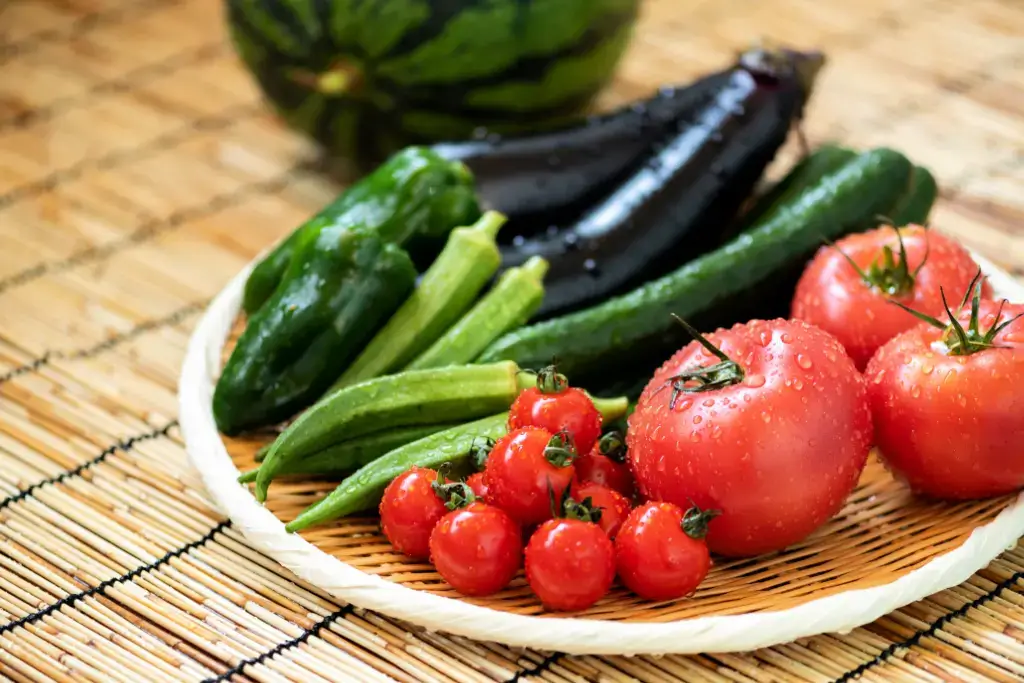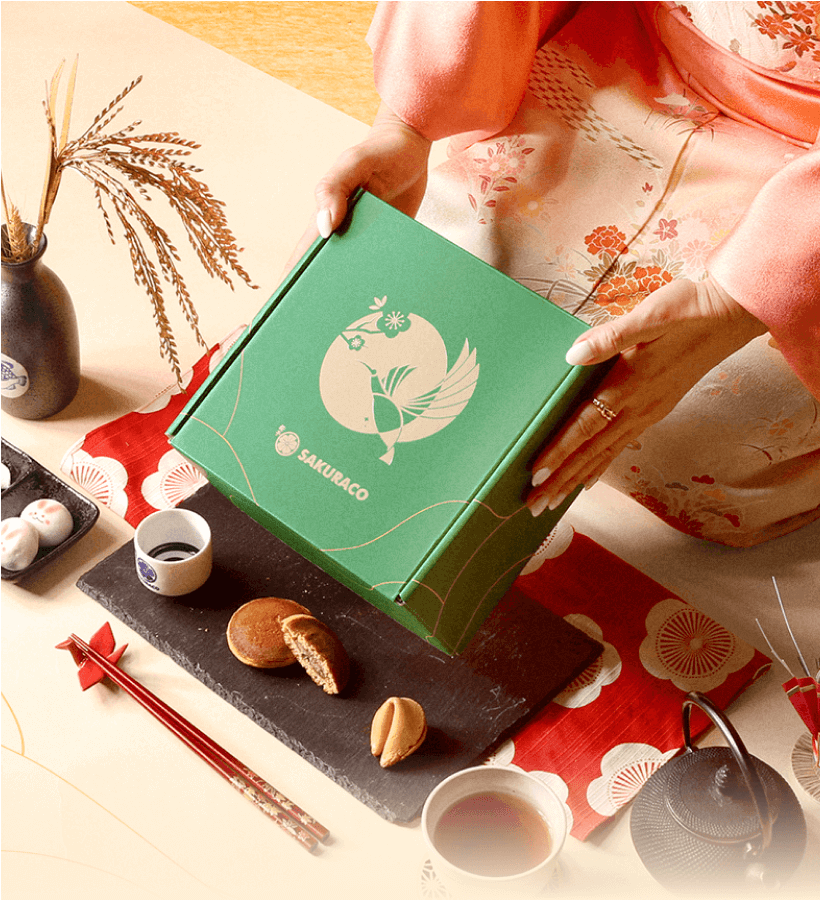People often crave cool foods and drinks to beat the heat in summer. Vegetables are always one of the top ingredients and essential in summer cuisine. This season offers a wide variety of delicious and healthy vegetables. Let’s explore some of the most popular Japanese vegetables in summer dishes!
Table of Contents
ToggleEdamame
Edamame are young green soybeans still in their fuzzy pods. When the beans are taken out of the pods, they’re called mukimame. There are different types of edamame in Japan. The typical kind is bright green, chamame from Tohoku is a bit brown and sweet, and kuromame from Kansai is big and fluffy.
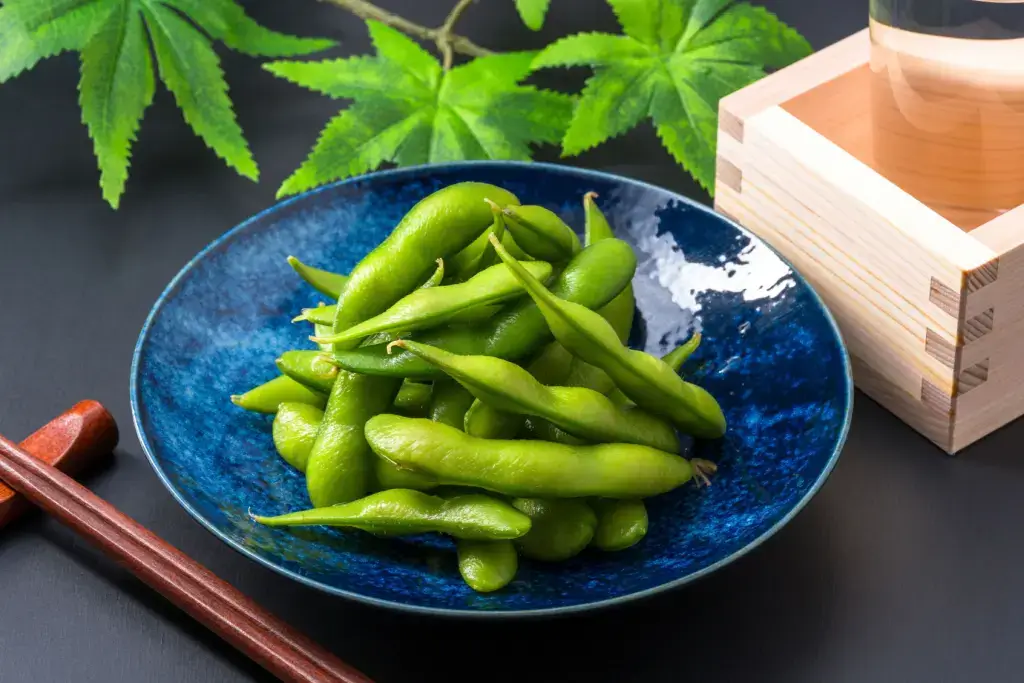
Edamame were first eaten in Japan over a thousand years ago, possibly as early as the 8th century when soybeans came from China. During the Edo period (1603–1868), people enjoyed boiled or steamed edamame as a refreshing snack. Travelers could find edamame in tea houses as a light meal. Today, edamame is still a favorite in Japan, especially in summer. They are often served with just a little salt in izakaya (Japanese pubs).
In Japan, edamame is also used in many delicious dishes. You might see it in colorful rice bowls, creamy soups, or crispy tempura. Some households mix edamame into croquettes or salads, while others enjoy it in hot dishes like simmered vegetables. One renowned sweet dish is zunda-mochi, a soft rice cake covered with sweet mashed edamame paste, which is especially popular in the Tohoku region.
Cucumber
Kyuri (cucumber) has become a beloved part of everyday meals in Japan. The Japanese variety is smaller, thinner, and darker green than many other cucumbers. Because it is over 95% water, it’s wonderfully juicy and hydrating, making it perfect for hot summer days.
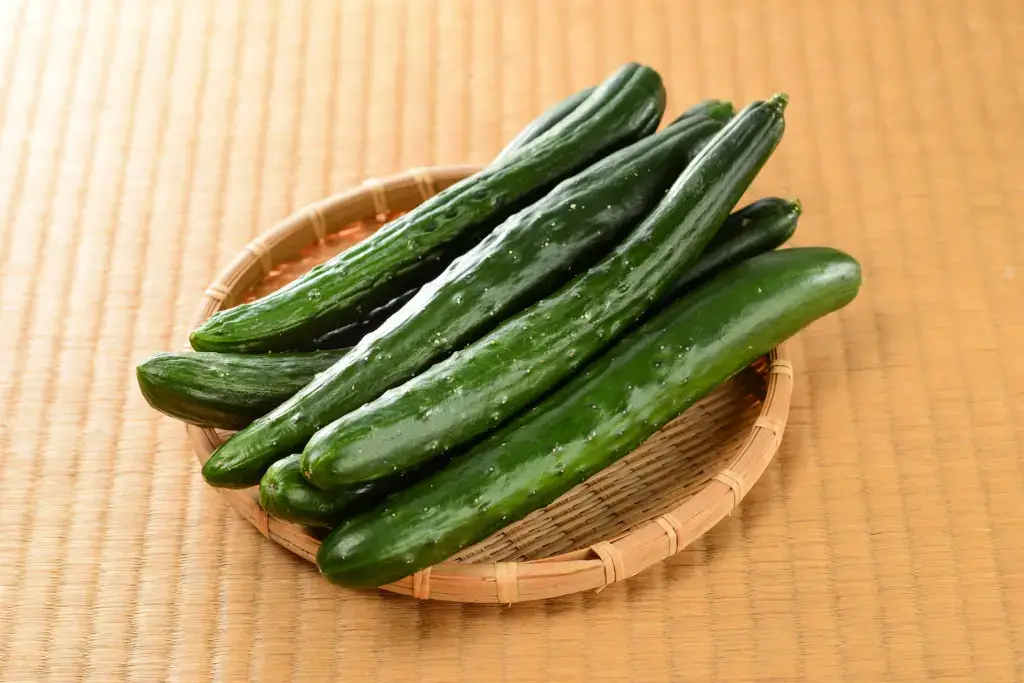
People like this Japanese vegetable because of its refreshing taste and health benefits. It contains vitamins, potassium, and other helpful nutrients like magnesium and manganese. Japanese cucumbers are crisp and fresh and have a gentle sweetness, unlike some cucumbers that can taste bitter. They’re also a little less watery than other types, which makes them an excellent choice for pickling or eating fresh.
In Japanese cuisine, you’ll find cucumbers in many dishes. Two popular ones are tataki kyuri, a smashed cucumber salad with soy sauce, sesame oil, and ginger. Another favorite is sunomono, a sweet and sour salad made with rice vinegar. You can also see cucumbers tucked into sushi rolls and inside bento (lunchboxes). Pickled cucumbers are also a classic side dish, adding a tangy and crispy contrast to meals.
Eggplant
Eggplants, or nasu in Japanese, are long, thin, and deep purple. They are mild and slightly sweet, with soft, spongy flesh. Their skin is thin and tender, so you don’t need to peel them. When cooked, the texture becomes creamy and smooth. Because their flavor is light and they cook quickly, people enjoy them grilled, sautéed, roasted, or even pickled as a tangy side snack.
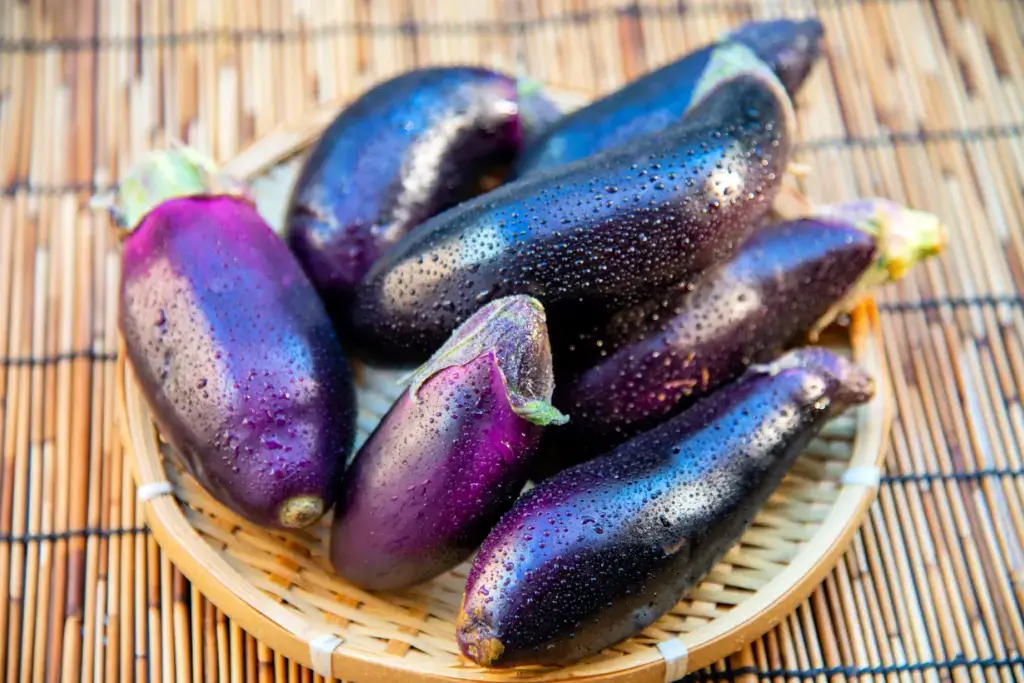
They are rich in nutrients, too! They have vitamin C to help the immune system, fiber for digestion, and potassium to keep your body in balance. The purple skin also has special antioxidants that protect your cells. That’s why many people love adding them to healthy meals.
In Japanese cooking, eggplants are used in many popular dishes. A well-known one is nasu dengaku, where the eggplant is grilled and topped with sweet miso sauce. Another tasty dish is nasu agebitashi, where eggplant is deep-fried and soaked in a soy sauce broth. You might also enjoy nasu donburi, an eggplant rice bowl, or dashi eggplant stew, where eggplant is gently simmered in flavorful broth. These dishes are loved in home kitchens and izakaya.
Okra
Okra, also known as lady’s fingers, is a fun and healthy summer vegetable. Though it originally came from Africa or South Asia and traveled through many countries, it only arrived in Japan in the early Meiji Period (1868–1912).
At first, people didn’t eat it; they simply enjoyed the lovely flowers, which look like hibiscus blooms. It wasn’t until the 1970s that Japanese farmers began growing okra as food across many regions. It’s one of the delightful Japanese vegetables enjoyed especially in the hot summer.
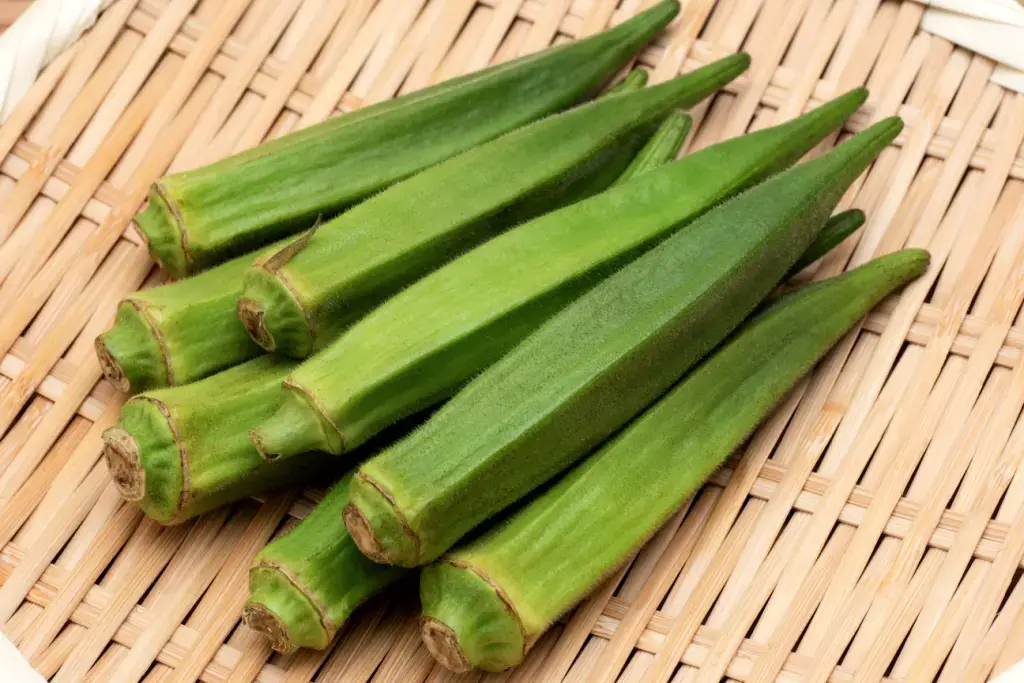
Okra is bright green and has a long, finger-like shape. It feels soft and fuzzy on the outside, and it’s famously gooey or sticky on the inside. Some people find this slime odd, but it’s a good thing. That sticky part comes from healthy fiber that helps lower cholesterol and is great for digestion. Okra is also packed with vitamins, calcium, iron, and antioxidants.
In Japan, okra is often boiled or blanched and served in simple but delicious dishes. One favorite is okra ohitashi, where boiled okra is soaked in a light soy sauce marinade. Another classic is okra with bonito flakes, where sliced okra is topped with dried fish and a dash of soy sauce. Okra is also added to noodle dishes, soups, and salads, giving each meal a fresh and healthy boost.
Bitter melon
Bitter melon, known as goya in Okinawa and nigauri in other parts of Japan, is one of the most unique and healthy Japanese vegetables. This vegetable is easy to spot with its bumpy green skin and strong bitter taste. The texture of bitter melon is crisp and slightly firm when raw, but it becomes soft when cooked.
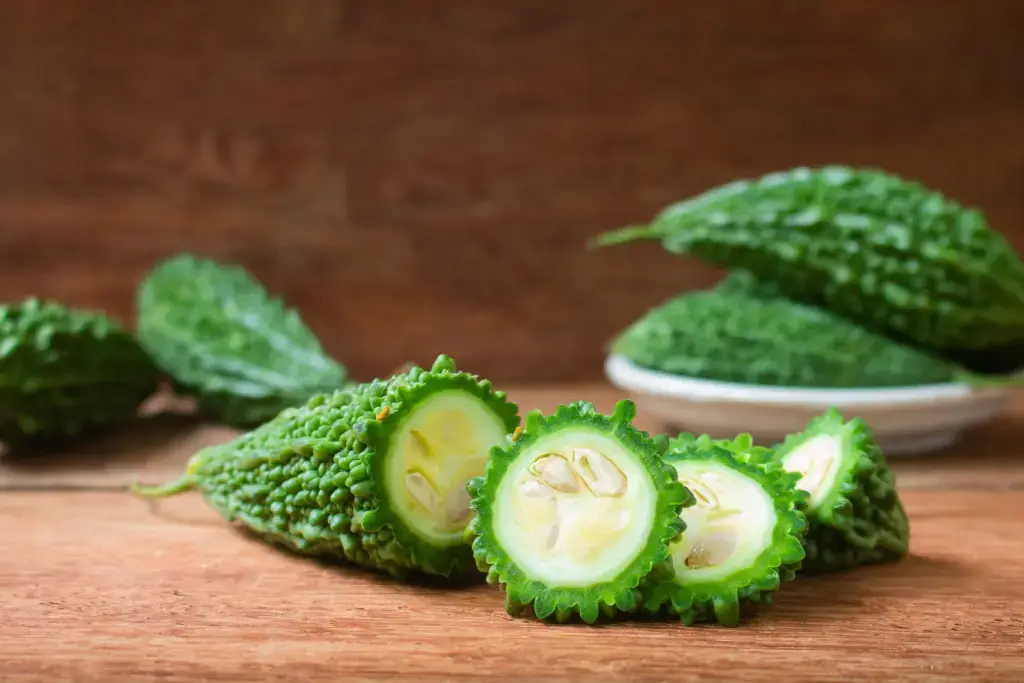
It originally came from tropical parts of Asia and has long been grown in southern China and Southeast Asia. In Japan, it became an iconic vegetable in Okinawa, where the warm weather and rich soil help it grow exceptionally well. Many people believe that goya is one of the secrets behind the long lives of Okinawan people.
One of the most famous dishes featuring bitter melon is goya champuru, a stir-fry with tofu, egg, and pork belly that tastes like a mix of different textures and flavors. Another dish is meat-gilled goya, where the bitter melon is stuffed like a little veggie boat. And for those who prefer a drink, there’s bitter melon tea, prepared by soaking dried goya slices in hot water.
Why should you try cooking with these Japanese vegetables?
Trying out Japanese vegetables in your kitchen is more than just about making a healthy meal; it’s a way to connect with a rich food culture that values balance, care, and creativity. Some are crisp and refreshing, others soft and creamy, and others may surprise you with new textures or flavors. But together, they all show how seasonal vegetables can be turned into comforting and nourishing dishes with just a few simple touches. Have you ever made a dish using Japanese summer vegetables at home? Let us know in the comments!

